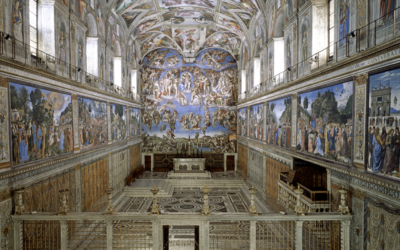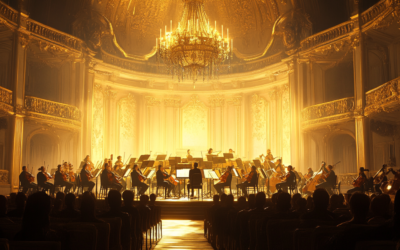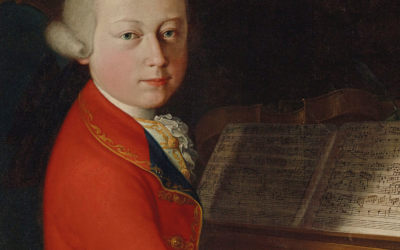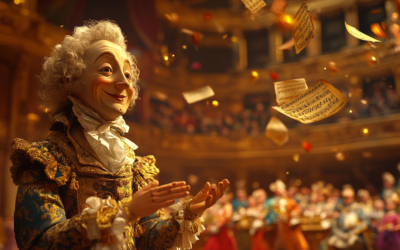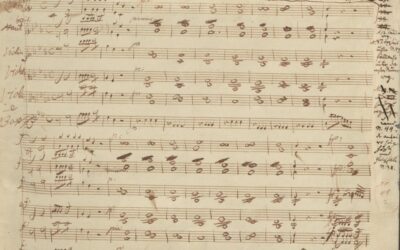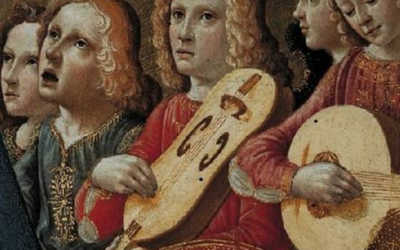Mozart’s Illusory Triumphs
A Tale of Embellishment and Courtly Absence
The story of the young Mozart’s so-called triumphs at the courts of Europe is a tale riddled with embellishments, half-truths, and fabrications—many courtesy of Leopold Mozart himself and those who later sought to mythologize his son. One such example is the visit to Munich on 12 January 1762.
Leopold and Anna Maria brought Wolfgang and his sister, Nannerl, to perform at the court of Prince-Elector Maximilian III. Yet, despite Leopold’s grand descriptions, not a single court document or reliable witness account has surfaced to confirm this celebrated performance.
The biographer Schlichtegroll claims, without evidence, that the Mozarts “performed before the Prince-Elector and received many compliments and praises.” But how much of this can we trust?
Upon their return to Salzburg, Leopold boasted that the children’s harpsichord playing had reached new heights, though no verifiable proof supports these claims either.
Mozart: The Fall of the Gods
This book offers a fresh and critical look at the life of Wolfgang Amadeus Mozart, challenging the myths that have surrounded him for centuries. We strip away the romanticised image of the “natural genius” and delve into the contradictions within Mozart’s extensive biographies. Backed by nearly 2,000 meticulously sourced citations, this work invites readers to explore a deeper, more complex understanding of Mozart. Perfect for those who wish to question the traditional narrative, this biography is a must-read for serious music lovers and historians.
"Documented reality doesn’t always match the fabulous stories passed down by Mozart’s biographers."
Mozart: The Fall of the Gods
The Glass Window Boast in Frankfurt
As the Mozarts embarked on their “grand tour,” Leopold couldn’t resist leaving a boastful mark. At their lodging in Frankfurt, he etched onto a windowpane: “Mozart, Maitre de la Musique de la Chapelle de Salzbourg avec Sa Famille le 12 Aout 1763.” The inscription—claiming a title he did not possess—translates to, “Mozart, Master of the Music Chapel of Salzburg with his family, 12 August 1763.” This self-promotion shows Leopold’s habitual need to exaggerate their importance, raising himself to the rank of Kapellmeister without ever holding that position officially. One might even say it was a compulsive need to dress up reality, ensuring history would remember him more grandly.
Vienna and the Imperial Court: Unimpressed or Ignored?
On 18 September 1762, the Mozart family reached Vienna, aiming to dazzle the imperial court. Schlichtegroll’s account again attempts to paint a picture of prestige. Yet, if we delve deeper, we find that neither Emperor Francis I nor his musicians paid much attention to the Mozart children. The imperial Master of the Chapel and the court musicians seem to have carried on quite unbothered by the young prodigies. Only Empress Maria Theresa, sharp-eyed and ever vigilant, reportedly referred to the Mozarts as “gueux”—that is, “beggars.”
A Fabricated Anecdote to Boost Mozart’s Fame
Desperate to validate this visit, Schlichtegroll concocted yet another fiction, this time at the expense of Georg Christoph Wagenseil, a respected court composer. According to the fanciful tale, Emperor Francis summoned Wagenseil to turn the pages for young Mozart, who had allegedly charmed the sovereign with his musical precocity. The story even features a precocious Wolfgang commanding: “Where is Mr. Wagenseil? He must come; he knows what he’s doing!” Wagenseil then obediently took his place, flipping pages for the child who supposedly performed one of the composer’s own concertos.
Implausibilities and Contradictions
Not only does Schlichtegroll’s account lack coherence, but it also stretches credibility. Are we to believe that Emperor Francis, preoccupied with the pressing concerns of war, granted an audience to a child performing feats such as playing the keyboard blindfolded or with a single finger? Moreover, this narrative conveniently undermines both Wagenseil and the emperor himself, portraying them as incompetent spectators to Mozart’s supposed genius. How convenient for Leopold’s legend.
As we peel back the layers of myth and examine the actual records—or lack thereof—the narrative that emerges is far less extraordinary than Leopold or his biographers would have us believe. In truth, the Mozarts’ encounters with European nobility were often less grand and far more fabricated than history remembers. “To believe the extraordinary,” it seems, “requires extraordinary evidence.” Alas, Leopold’s stories often fall woefully short.
You May Also Like
The Legend of Mozart’s Miserere
The enduring popularity of the narrative surrounding Mozart’s Miserere highlights the allure of the prodigy myth, but as we peel back the layers, we uncover a more nuanced picture of his life and the musical landscape of the time. The reality often contrasts sharply with the romanticized tales that have shaped our understanding of his genius.
Rediscovering Musical Roots: The World Premiere of Gasparini and Mysliveček
This December, history will come alive as the Camerata Rousseau unveils forgotten treasures by Quirino Gasparini and Josef Mysliveček. These premieres not only celebrate their artistry but also reveal the untold influence of Gasparini on Mozart’s Mitridate re di Ponto. A pivotal event for anyone passionate about rediscovering music history.
The Curious Case of Mozart’s Phantom Sonata
In a striking case of artistic misattribution, the Musikwissenschaft has rediscovered Mozart through a portrait, attributing a dubious composition to him based solely on a score’s presence. One has to wonder: is this music really Mozart’s, or just a figment of our collective imagination?
The Illusion of Canonic Mastery
This post explores the simplistic nature of Mozart’s Kyrie K.89, revealing the truth behind his early canonic compositions and their implications on his perceived genius.
The Unveiling of Symphony K.16
The Symphony No. 1 in E-flat major, K.16, attributed to young Wolfgang Mozart, reveals the complex truth behind his early compositions. Far from the prodigious work of an eight-year-old, it is instead a product of substantial parental intervention and musical simplification.
The Cibavit eos and Mozart’s Deceptive Legacy
The Cibavit eos serves as a striking reminder that Mozart’s legacy may be built on shaky foundations, questioning the very essence of his so-called genius.


